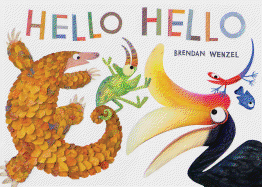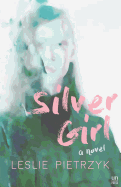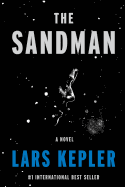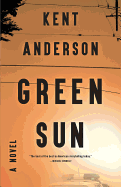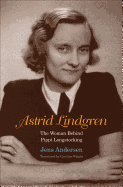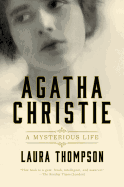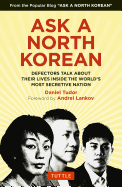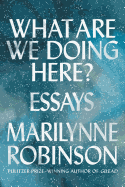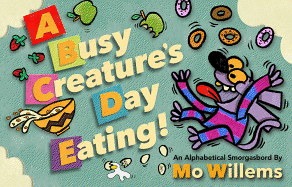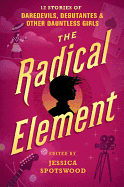Friday, March 23, 2018
Spring is coming, and for me that typically means a little vacation. Passport in one hand, Global Entry number in the other, I'm ready to book (the cheapest) flights anywhere in the world. A couple years ago I went to Berlin, last year London. This year: Beijing!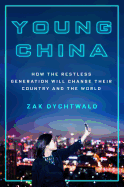 Nĭ hăo! I'm knee deep in a Mandarin language-learning app. I have pop superstar Zhang Guo Rong and Chengdu hip-hop artist Kafe.Hu playing on a loop. And I'm gobbling up Zak Dychtwald's personable inquiry into the social and cultural shifts experienced by Chinese millennials, Young China.
Nĭ hăo! I'm knee deep in a Mandarin language-learning app. I have pop superstar Zhang Guo Rong and Chengdu hip-hop artist Kafe.Hu playing on a loop. And I'm gobbling up Zak Dychtwald's personable inquiry into the social and cultural shifts experienced by Chinese millennials, Young China.
But I'd get nowhere without guidebooks. Every single time, they are absolutely worth the investment. My vacations are short--I'm spending four or five days in a city, not weeks. So I want curated recommendations at hand. Right now, I'm familiarizing myself with Lonely Planet's pocket guides to Beijing and Shanghai--where I'll spend the tail end of my trip. I'll take these everywhere with me, because one time in Prague, my boyfriend and I mismanaged our sightseeing time (classic us!) and our phones were dying. Becoming ever so "hangry" as the evening grew darker, we whipped out our little book and quickly located a fabulous restaurant not six blocks away. Within minutes we were gorging on duck and herbal Czech liqueur.
Right now, I'm familiarizing myself with Lonely Planet's pocket guides to Beijing and Shanghai--where I'll spend the tail end of my trip. I'll take these everywhere with me, because one time in Prague, my boyfriend and I mismanaged our sightseeing time (classic us!) and our phones were dying. Becoming ever so "hangry" as the evening grew darker, we whipped out our little book and quickly located a fabulous restaurant not six blocks away. Within minutes we were gorging on duck and herbal Czech liqueur.
Books like Moon's Berlin Walks can come in handy when you just want to take in the city without a destination in mind. And lots of guides will lay out a day-by-day plan for short-term travelers like yours truly: if you're only in Shanghai for two days, go here.
Of course, I do a lot of Internet research ahead of time; this is when I'm all over Time Out and Thrillist. But on the ground, where my data plan may be unreliable and my phone battery is finite, guidebooks have my back. --Dave Wheeler, associate editor, Shelf Awareness
Bring Out the Dog
by Will Mackin
Every war seems to spawn its own bookshelf of fiction (e.g., Hemingway, Heller, O'Brien, Stone and, more recently, Klay, Powers and Ackerman), and the writers who endure display talents for observation, voice and narrative that outlive the high-strung emotion of the battlefield. A navy veteran with multiple deployments in Iraq and Afghanistan, Will Mackin is one of those with staying power. The stories in his debut, Bring Out the Dog, are told with such verisimilitude, such balance between compassion and cynicism, such lean haunting prose, that one can't easily shake them. Although mostly set in the Afghan huts and shipping container outposts, with geared-up soldiers anticipating air support at the push of a radio button, they are about much more than the typical buddy/brother military hooah.
Sharing a narrator who swings from gung-ho to bemused, a core of SEAL teammates and similar find-and-kill missions, Mackin's stories exude the very stink of the war--the burning human waste vapors and the unseen enemy's "telltale mix of BO and cigarette smoke." They generate a night-vision goggle panorama of Afghanistan--its "wild dogs, hobbled goats, ruined castles, and winter stars." In the words of an excited new recruit, they also capture the imagined romance of special ops: "You guys muj up, in turbans and man jammies and shit, with MP5s tucked up in there. Like, ka-chow!" Read Bring Out the Dog for its insight into those who fight our modern wars, but read it again for its grasp of the vicissitudes of the human heart. --Bruce Jacobs, founding partner, Watermark Books & Cafe, Wichita, Kan.
Discover: A powerful debut, Mackin's haunting stories capture both the minutiae of special operations warfare and the disquiet of those in the thick of it.
Girls Burn Brighter
by Shobha Rao
Girls Burn Brighter is a testament to the strength of female friendship in the face of unimaginable trauma. The small Indian village of Indravalli has offered few comforts to young Poornima, who's been left under the command of her abusive father after the death of her mother. Her friendship with the brilliant, resilient Savitha is the only hope Poornima has for happiness in the future, particularly after she is betrothed to marry a man with a grudge against the world. But after a horrifying act of violence, Savitha is forced to run away if she wants to survive, leaving Poornima to spend her years searching for the friend who made life worth living.
Shobha Rao astounds in her debut novel, following the publication of her short story collection, An Unrestored Woman--not just with stunning prose, but with mastery of pacing, too. In Rao's hands the heavy, unrelenting subject matter, which might otherwise have been shattering for its raw honesty, is fluid and propulsive. While she manages to keep the tension mounting in a plot moving ever toward the seemingly unreachable reunion of the two heroines, Rao maintains the emotional intensity of her story and its thematic resonances. Over the course of its brutal and blazing trajectory, the novel never loses sight of the two strong, sensitive souls at its center, leaving the reader breathless in the presence of their power. --Alice Martin, freelance writer and editor
Discover: A devastating debut novel about the unrelenting bonds of friendship, Girls Burn Brighter is a literary force that empowers as it overwhelms.
Silver Girl
by Leslie Pietrzyk
Leslie Pietrzyk's (This Angel on My Chest) fourth book examines friendship, family and how both are affected by class.
It's the early '80s, and a serial killer is on the loose, hiding cyanide in Tylenol capsules. An unnamed narrator has escaped her small Iowa town and troubled family for college in Chicago, which she can barely afford. She envies her best friend, Jess, whose yuppie parents shop and drink out of boredom and sadness. Jess refuses to talk about her sister's recent death, while the narrator feels both distant from and protective of her own sister back in Iowa. She becomes tangled up with Jess's family in ways she never wanted when the Tylenol Killer strikes closer to home.
The narrator is driven by secrets and longing, which for her are often the same thing. She craves acceptance from her fancy school and Jess's upper-crust family. She wants Jess's fiancé. She longs for more, even if she doesn't know exactly more of what. Throughout, she's a mysterious character with a frank voice. Characters insist that they know the real her, no matter how she tries to hide it, and it leaves the reader to wonder whether we do, too.
Silver Girl is a novel about the intricacies of young women--their conflicting desires, their anger and how they hide or reveal themselves. Their relationships--in-born and chosen, loving and fraught--are given ample space for exploration. Raw and beautifully written, Silver Girl is also about whether it's possible to be truly known by anyone, though friends and sisters come close. --Katy Hershberger, freelance writer, bookseller and publicist
Discover: A dark and beautiful novel about sisterhood, friendship and female longing.
Mystery & Thriller
The Sandman
by Lars Kepler
A young man is walking across a bridge at night. An innocuous image, until the man is revealed as being covered in blood--and having been declared legally dead seven years earlier. This is how Lars Kepler's The Sandman begins, and it's almost impossible to stop reading after that.
The fourth installment in the Swedish series (after The Fire Witness) is personal for Detective Superintendent Joona Linna, as readers find out more about what happened to Linna's wife and child. Years earlier, Linna and his partner, Samuel Mendel, locked up sadistic killer Jurek Walter, aka the Sandman. But Walter swore tragedy would befall Mendel and his family, and the promise came true. Linna lost his own family soon after, and the Sandman's other targets kept disappearing, despite Walter's incarceration.
The young man on the bridge turns out to be an escaped victim named Mikael, kidnapped 13 years earlier. His sister remains a prisoner, but he's in such poor physical and mental condition, Mikael can't reveal much about where they were held. Linna takes desperate measures--including asking his colleague Saga Bauer to go on a life-risking undercover mission--to rescue the sister before she's killed, and must once again confront his most terrifying enemy.
Like Walter, Lars Kepler--pseudonym for husband and wife Alexandra and Alexander Ahndoril--knows how to ensnare targets and make them lose time. Thriller fans will find it hard to escape The Sandman's spell, for the suspense is unrelenting and the bite-size chapters end on cliffhangers. But unlike the villain, who makes victims go to sleep, his namesake novel will keep readers up all night. --Elyse Dinh-McCrillis, blogger at Pop Culture Nerd
Discover: To save a kidnapped girl, Detective Superintendent Joona Linna once again faces his most sinister nemesis.
Green Sun
by Kent Anderson
Hanson, the hardbitten cop featured in Kent Anderson's first two crime novels (Sympathy for the Devil and Night Dogs), left the Portland, Ore., police department to teach college literature outside Boise. It didn't take. In Green Sun, the 38-year-old Vietnam Special Forces vet is now the oldest rookie in the Oakland PD and works the graveyard shift in the crime-ridden eastern districts. His lieutenant reminds him that Oakland has the "highest proportion of ex-cons of any city in California." His recommendation: throw them back in prison. Willing to knock heads when he has to, Hanson prefers a softer approach. Maybe it's his literature background that drives him to use genial conversation before pulling his gun or martial arts "short stick." Or maybe it's that he's unafraid: "If you're mean and don't care if you live or die, nobody messes with you."
An ex-cop and decorated Vietnam vet himself, Anderson paints his scenes with all the tattoos, dope and 9mm guns that characterize urban crime. Working through countless hangovers and hair-of-the-dog cures, Hanson builds an uneasy rapport with his community. He befriends the young bike-riding scamp Weegee, earns the respect of drug kingpin Felix and woos the sexy black crime victim Libya. However, he's still "a soldier in Oakland's army of occupation." He may be a soft-touch outcast in the OPD, but he has no illusions. Calming--rather than busting--a couple of knife-fighting drunks, he hopes the best for them but reminds himself: "They were drunk and psychotic black men in Oakland. They'd never be okay." Anderson's Green Sun is a cop novel as hard and real as it gets. --Bruce Jacobs, founding partner, Watermark Books & Cafe, Wichita, Kan.
Discover: In Anderson's stellar third beat cop novel, cynical, fearless Officer Hanson tries a congenial spin to policing crime-ridden East Oakland.
Biography & Memoir
Astrid Lindgren: The Woman Behind Pippi Longstocking
by Jens Andersen, transl. by Caroline Waight
Astrid Lindgren is Danish critic and author Jens Andersen's (Hans Christian Andersen: A New Life) thoughtful biography of the Swedish writer. Lindgren came of age in the 1920s, at the start of an exciting period of new freedoms and opportunities for women and children, all of which would play out in her life.
At 16, she got her first job, with a local newspaper. Two years later, she was pregnant by her infatuated, overbearing boss. She refused to marry him, moved to Stockholm, and put her son in foster care while she took classes, found work and fought depression. She married and devoted herself to office jobs, her marriage and raising her children according to her own considerate and respectful ideas about them. When her husband had an affair and she won a major literary prize that included her first book publication, she re-evaluated her priorities and decided to live by the principle that "if you're going to be happy, it has to come from within, and not from another person." She began to write seriously.
Her first character, Pippi Longstocking, became an enormous international success in 1945. Pippi was the world's strongest child, rich, anti-authoritarian, self-sufficient and "a cheerful pacifist whose answer to the brutality and evil of war was goodness, generosity, and good humor." Andersen analyzes Lindgren's work in light of contemporary childhood development theories, and examines her later involvement in politics, her uneasy relationships with feminism and with fame. His biography matches the liveliness, energy and sensible idealism of his subject. --Sara Catterall
Discover: A thoughtful lively biography of the internationally famous Swedish author and beloved public figure.
Agatha Christie: A Mysterious Life
by Laura Thompson
Known as the Queen of Crime, and a perennial bestselling author decades after her death, Agatha Christie is a subject of fascination. Born and raised in the coastal town of Torquay, England, she enjoyed an idyllic childhood and an unusually close relationship with her mother, Clara. Christie married twice and had one daughter, spent significant time in the Middle East on archeological digs, wrote hundreds of letters in addition to dozens of mystery novels and short stories, and created two of literature's most enduring detectives, Hercule Poirot and Miss Jane Marple.
Biographer Laura Thompson (The Six) delves into Christie's personal history in Agatha Christie: A Mysterious Life. She paints a charming picture of her subject's childhood and young adult years. A lifelong observer of people's quirks and character traits, she was "more astute in her art than in her life," Thompson says. She points to Christie's convoluted relationships with her first husband, Archie, and her daughter, Rosalind--contrasting them with Poirot's cool detachment and Miss Marple's keen insight into human nature. Thompson also makes much of the six novels Christie wrote under the pen name Mary Westmacott, especially Unfinished Portrait, which draws heavily on her life experiences.
"No life is a code to be deciphered," Thompson writes. "Omniscience is for Hercule Poirot. Real life knows less; it has the beauty of mystery." Christie captured that mystery brilliantly in her books, and Thompson does her best to explore--though never entirely to solve--the mysteries of author's life. --Katie Noah Gibson, blogger at Cakes, Tea and Dreams
Discover: Laura Thompson's extensive biography of Agatha Christie delves into her personal history and prolific career.
Current Events & Issues
(((Semitism))): Being Jewish in America in the Age of Trump
by Jonathan Weisman
In (((Semitism))): Being Jewish in America in the Age of Trump, New York Times deputy Washington editor Jonathan Weisman (No. 4 Imperial Lane) delivers a concise but penetrating analysis of the rise of an anti-Semitic alt-right that has coincided with Trump's political ascendancy. And he offers a constructive prescription for countering what he calls a "new movement of prejudice and hate largely born in the invisible fever swamp of the Internet, now present in the flesh."
Given its brevity, (((Semitism))) doesn't purport to be an exhaustive treatment of the rise of this odious movement. Weisman chooses, instead, to focus much of his attention on the frighteningly effective use of assorted online resources by people he describes as "technologically savvy, self-promotional, and absolutely vicious" to target and harass their opponents. One of the most disturbing such incidents involves the neo-Nazi troll attack on Jewish realtor Tanya Gersh, who had the misfortune to deal with Spencer's mother in Whitefish, Mont., where the movement's headquarters is located.
But Weisman frankly concedes that for all the unease among American Jews about the far right's muscle flexing since Trump's election, "anti-Semitism is not the worst affliction to beset the United States in the Trump era," at least not when compared to such outrages as physical assaults on Muslim Americans or the reversals of gay and transgender rights. That leads him to argue that Jews, rather than hunkering down and hoping this wave of bigotry will pass like a summer thunderstorm, need to make common cause with these oppressed groups to build "alliances against hate." --Harvey Freedenberg, freelance reviewer
Discover: Journalist Jonathan Weisman exposes the tactics of the alt-right and offers a prescription for combating them.
Ask a North Korean: Defectors Talk about Their Lives Inside the World's Most Secretive Nation
by Daniel Tudor
Originating with the NK News weekly column "Ask a North Korean," Daniel Tudor's book by the same name offers readers an insider's perspective of the country "labelled as the last genuine Communist/Stalinist place on earth." Tudor, a correspondent in South Korea for the Economist, takes questions from people around the world and poses them to North Korean defectors. The questions cover topics not typically discussed elsewhere, issues that focus on ordinary life such as dress, propaganda, farming, love and plastic surgery.
Tudor adds a caveat in his introduction noting that the essay contributors, as defectors, were unhappy or disadvantaged enough to risk their lives to leave North Korea. Therefore, he points out, "their views may not always be representative of the general North Korean population." Still, the essay writers are diverse, offering glimpses of life in major cities, including Pyongyang, as well as more rural farming regions, and providing perspectives both male and female and of varying ages and statuses.
The range of subjects covered in Ask a North Korean is fascinating, allowing the reader to understand citizens of this shielded country. Simultaneously, the essays are unnerving, given conflicted views of the press and freedom of speech around the world, not just in North Korea. It's a stark reminder of how valuable these rights are and how easy it is to take them for granted.
The book's color photos complement the essays and help ground the more abstract ideas. Ask a North Korean is an informative and intriguing collection, offering a light into what is for most a dark tunnel. --Jen Forbus, freelancer
Discover: North Korean defectors respond to questions about what it was like living in the secretive country.
Essays & Criticism
What Are We Doing Here?: Essays
by Marilynne Robinson
In What Are We Doing Here?, Pulitzer Prize-winning author Marilynne Robinson (Lila) argues that misinterpretations of faith and history have negatively influenced modern politics and attitudes. In these essays, Robinson applies rigorous scholarship--in faith, science and the humanities--to difficult questions and arrives at answers that are discomfiting as they reveal humankind's most egregious flaws. She rails against the perversion of history in fake news and the twisting and contorting of scriptural fact for self-interest.
"Conscience" addresses how modern views of morality have shaped societal beliefs and served as justification for acts of suppression and violence, with little regard for historical fact. Robinson discerns the true intent of Puritanism in "Our Public Conversation: How America Talks about Itself"--it's not about the "priggishness, acquisitiveness, hypocrisy, narrow-mindedness, and fanaticism" associated with the word, but rather a spirit of reform and a "passion for education, genius for institution-building." In "Integrity and the Modern Intellectual Tradition," Robinson elegantly explains why faith must coexist with scientific empiricism: scientific empiricism could not have occurred without the humanizing effects of faith.
What is remarkable is the wealth of humanities and science that Robinson draws upon to develop her arguments, melding seemingly divergent viewpoints to create a holistic picture that explains the breakdown of morality in modern society. "We can see now that intemperate speech can spiral off into fear and rage, that we are as vulnerable to incendiary language as any society ever has been, that we become loyal to our hostilities and reduce our words to weapons, a phenomenon not unrelated to the recent tendency of some to amass weapons." --Nancy Powell, freelance writer and technical consultant
Discover: In 15 essays, Pulitzer Prize-winning writer Marilynne Robinson addresses modern society's spiritual and intellectual crisis.
Children's & Young Adult
Hello Hello
by Brendan Wenzel
2017 Caldecott Honor recipient Brendan Wenzel (They All Saw a Cat) shares his passion for conservation in a vibrant romp starring a cornucopia of wildlife and two house cats.
In a dazzling variety of media, including cut paper, pencils, oil pastels, marker and digital art, author/illustrator Wenzel presents a prodigious cast of fauna. His read-aloud-ready rhyming text compares and connects disparate species, pairing a cheetah and a yellow boxfish for "Hello Spots" or a tiny chameleon with a vast whale shark for "Hello Giant/ Hello Not." In this celebration of commonalities, though, sharp-eyed readers will note the giant fish and the petite reptile have similar skin patterns. The endearing creatures goggle playfully at each other with wide, round eyes vaguely reminiscent of Wallace and Gromit as Wenzel crescendos into a leaping, dancing invitation: "A world to see/ A world to know./ Where to begin?/ Hello Hello." Humanity even gets a turn in the spotlight, with a smiling orangutan exchanging the thumbs-up sign with two tousle-haired children.
Hello Hello encourages readers age three to eight years to look for similarities, not differences, when considering our fellow travelers on starship Earth. Young animal fans will find a memorization-worthy prize at the end: two spreads of keyed charts labeling each animal in the book by species and, if applicable, conservation status. Anyone can identify a lion, but children who possess this book will know a brownbanded bamboo shark ("Near Threatened") or Araripe manakin ("Critically Endangered") on sight. This uplifting visual delight will inspire a new generation of youngsters to love the natural world. --Jaclyn Fulwood, youth services division manager at Main Branch, Dayton Metro Library
Discover: Caldecott Honor recipient Brendan Wenzel's bouncy rhymes accompany a startling and beautiful array of wildlife in this joyful picture book.
A Busy Creature's Day Eating: An Alphabetical Smorgasbord
by Mo Willems
The ABCs have never been so dramatic! In Mo Willems's A Busy Creature's Day Eating: An Alphabetical Smorgasbord, a creature who looks suspiciously like a preschooler (except for the long tail, purple skin and orange eyes) devours everything in sight. Starting with innocuous apples, berries and cereal, the creature quickly moves on to doughnuts, eggs and... furniture? The "Huge Hot-Sauce Halibut Hoagie" seems particularly delicious, but the lunchbox, mayonnaise and napkin may be what tips the hungry omnivore over the digestive edge. A kindly cube-headed father figure, who is nowhere to be seen when the creature is eating jackets and kilts, shows up to offer soothing rice, saltines and tea, plus plenty of kisses and hugs ("XO-XO-XO!").
Readers of all ages will laugh and groan at the edible, alphabetical exploits of the busy creature, whose eyes are definitely bigger than its stomach, empathizing when it reaches the latter half of the alphabet, which includes such words as "potty," "queasy" and "UGH!" Willems's mostly single-word-per-page narrative is surprisingly eloquent, with the exuberant purple protagonist conveying a thousand words in every facial expression. Keen-eyed readers might catch a few glimpses of characters from Willems's other series in the background: Elephant and Piggie (from I Will Take a Nap! and Waiting Is Not Easy!, the bunny from Knuffle Bunny: A Cautionary Tale and Knuffle Bunny Too and the pigeon from Don't Let the Pigeon Stay Up Late and The Duckling Gets a Cookie!? As with all his books, Willems gets right to the heart (or, in this case, belly) of a kid's day-to-day life with humor and perfect understanding. --Emilie Coulter, freelance writer and editor
Discover: In Mo Willems's wacky and engaging picture book, a purple creature hungrily munches through the alphabet, learning a few lessons about greed and digestion along the way.
The Radical Element: 12 Stories of Daredevils, Debutantes & Other Dauntless Girls
by Jessica Spotswood, editor
For some teenagers, "historical fiction" has a vegetables-like connotation: it's nutritious but not all that flavorful. With The Radical Element: 12 Stories of Daredevils, Debutantes & Other Dauntless Girls, editor Jessica Spotswood may well redeem historical fiction for teens who have a taste for righteous female protagonists.
The 12 stories, set in the U.S., run chronologically from 1838 Savannah to 1984 Boston and spotlight girls from a range of ethnic and social backgrounds. In Erin Bowman's "The Magician," set on the Colorado River in 1858, an abandoned teenage girl masquerades as a boy so that she can work as a stevedore. In Marieke Nijkamp's "Better for All the World," set in Washington, D.C., in 1927, a neurodivergent 17-year-old girl is fixed on a career in law. In Meg Medina's "The Birth of Susi Go-Go," set in 1972 Queens, 16-year-old Cuban immigrant Susana idolizes her go-go-boots-wearing neighbor, of whom Susana's mother disapproves. Several stories feature protagonists defying their parents, in one case to procure an education, in another to serve her country.
Each offering in The Radical Element, Spotswood's companion to 2016's A Tyranny of Petticoats: 15 Stories of Belles, Bank Robbers & Other Badass Girls, ends with an author's note about the story's particular historical terrain, but there's common thematic ground here. Ruby, from Spotswood's 1905-set "Step Right Up," in which the 17-year-old Tulsan plots to escape her abusive uncle by joining the circus, sums up all the young firebrands' ambitions when she says, "One way or another, my life changes today." --Nell Beram, freelance writer and YA author
Discover: Twelve stories set at various places and times in U.S. history feature teenage girls who break the rules to save themselves.




